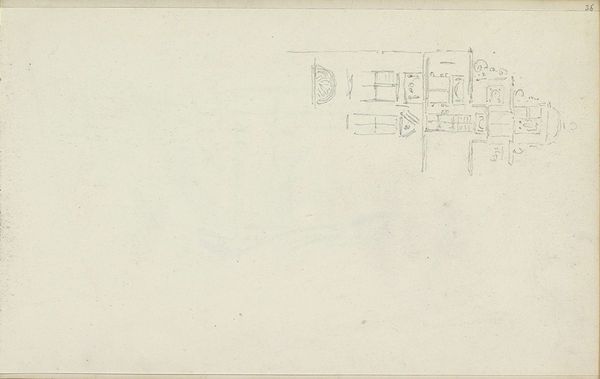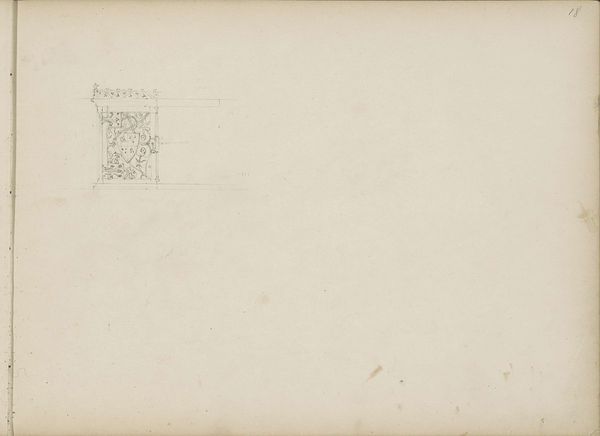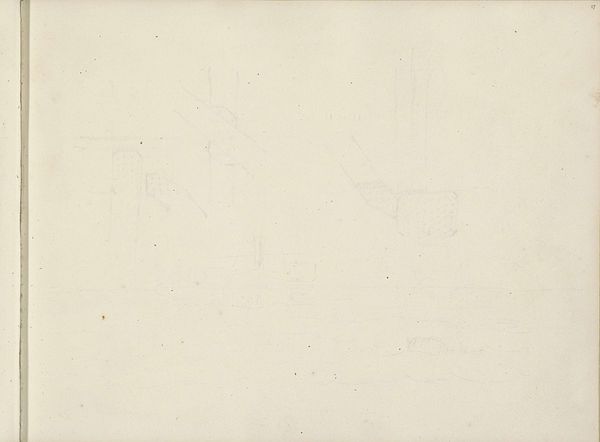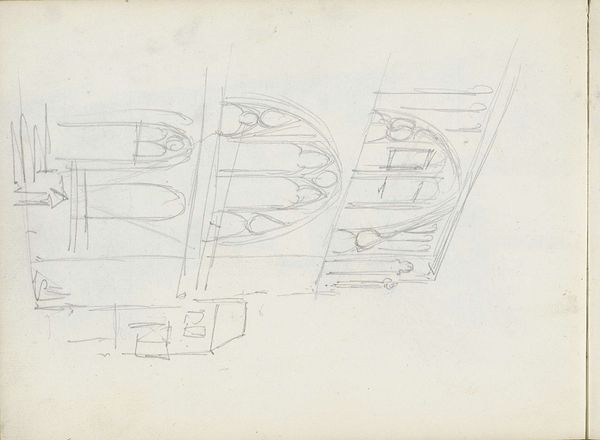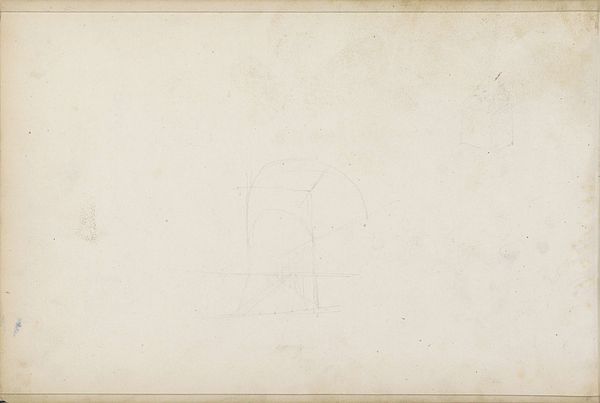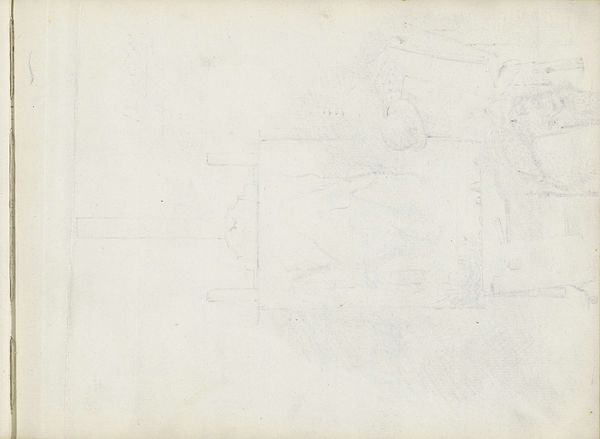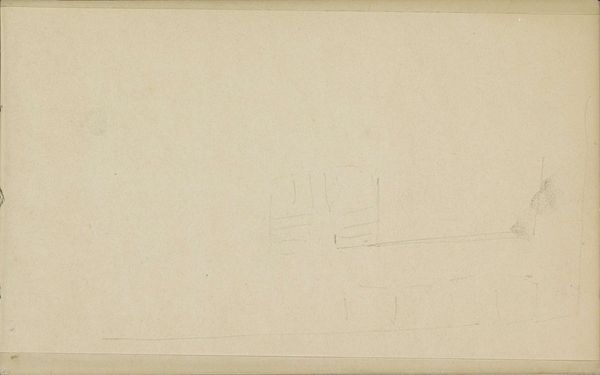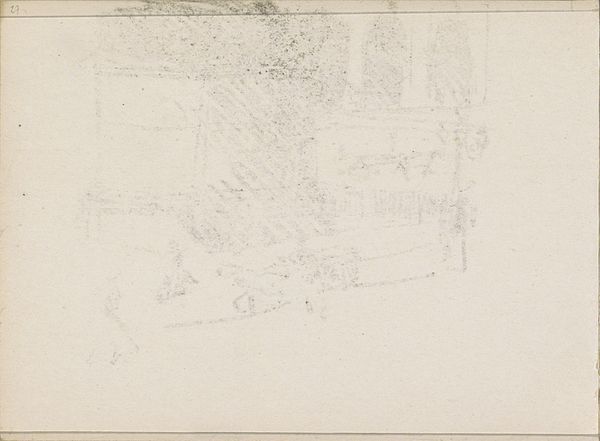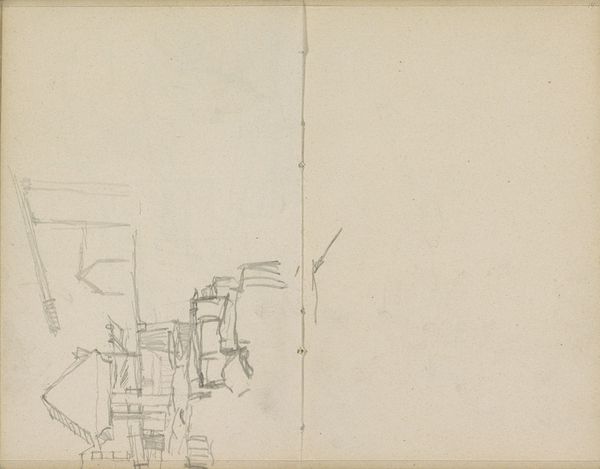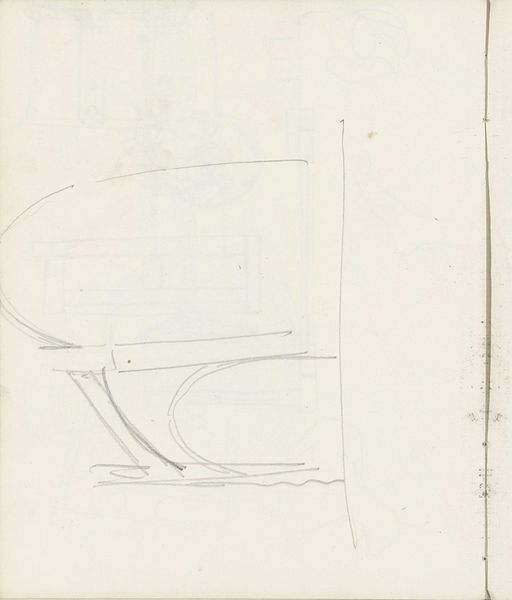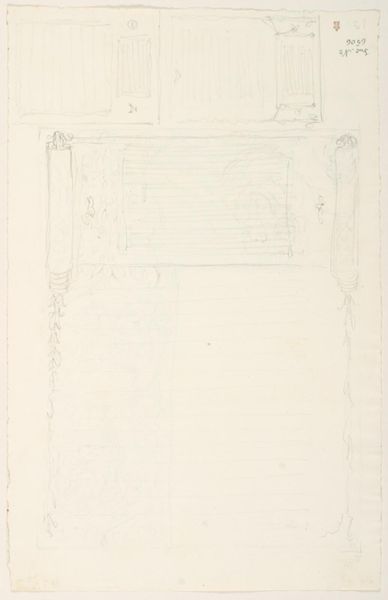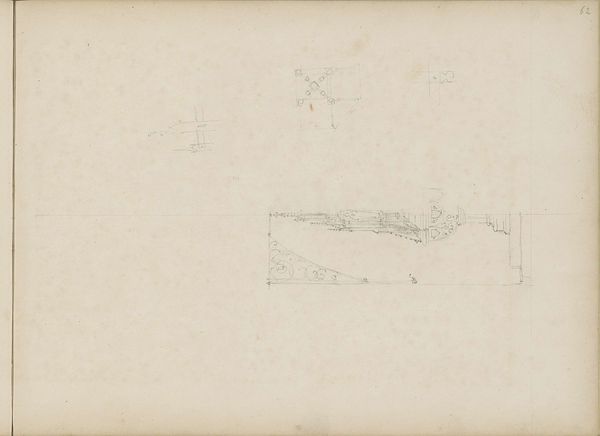
drawing, paper, pencil
#
drawing
#
paper
#
form
#
geometric
#
pencil
Copyright: Rijks Museum: Open Domain
Curator: So, here we have "Wastafel en voetenbank," or "Washbasin and Footstool" from 1857-1859, a drawing in pencil on paper. It's currently held here at the Rijksmuseum. Editor: Well, first blush? It looks like an architect’s ghost imagined a really simple chair. Almost like furniture for minimalist spirits. It’s skeletal. Curator: That's a lovely reading. The artist here is Pierre Joseph Hubert Cuypers, and these drawings are form studies for ecclesiastical furniture, preliminary design sketches. The footstool would be positioned at the priest’s feet. Editor: Ecclesiastical furniture makes sense. It does have this sparse, almost monastic feel to it, the bare-bones lines. And there’s something about the precise measurements jotted down…a reverence for form. It's meant to inspire serenity, to invite a reflective, meditative spirit. Curator: Indeed. You’ll notice, too, that geometric shapes dominate. Look at the careful curves mirroring each other, the symmetry employed in each individual section. They underscore a larger thematic effort towards ideal proportion. These drawings allow us a special perspective on process. We observe an artisan-architect working through challenges. How high should the seat back reach, exactly? The paper becomes a stage for resolving that dilemma. Editor: You know, viewing it now, it feels less stark and more...vulnerable. Knowing it's a step in the design journey gives it warmth, like stumbling upon Da Vinci's workshop notes. Curator: Precisely! A tangible and valuable connection to past creative endeavors. Editor: It speaks, for me, to the elegance of simple forms, to the beauty in function, even incomplete. Curator: Absolutely, and the socio-religious forces shaped artistic expression. It offers an introspective glimpse. Editor: A simple sketch offers a quiet power—it’s unexpectedly affecting. Curator: It really allows you a look into the religious conventions of the time through an artisans work.
Comments
No comments
Be the first to comment and join the conversation on the ultimate creative platform.
